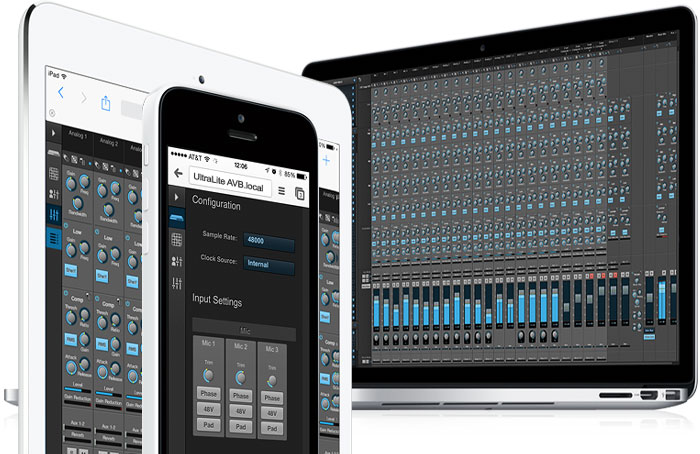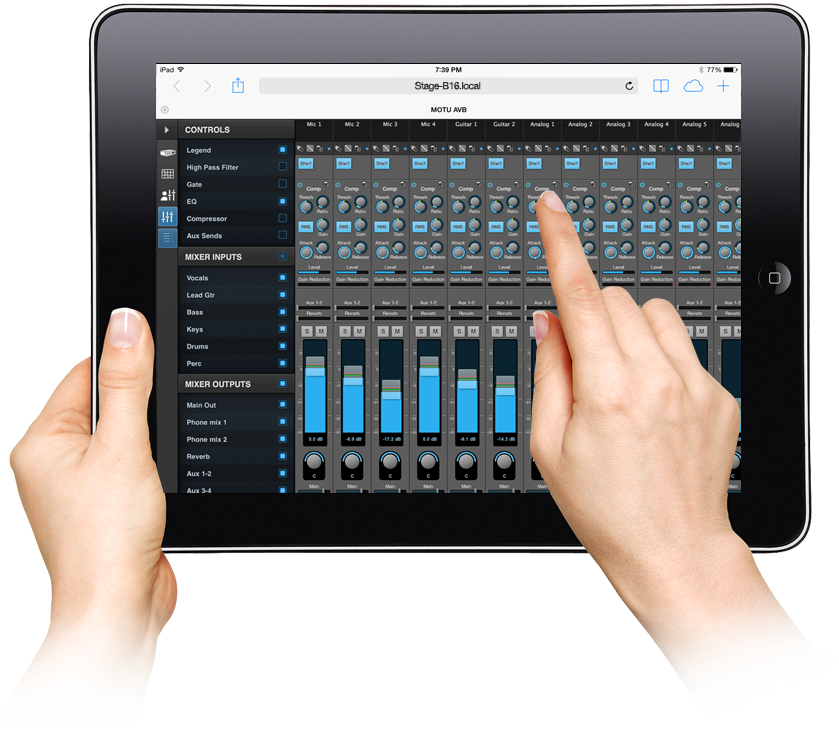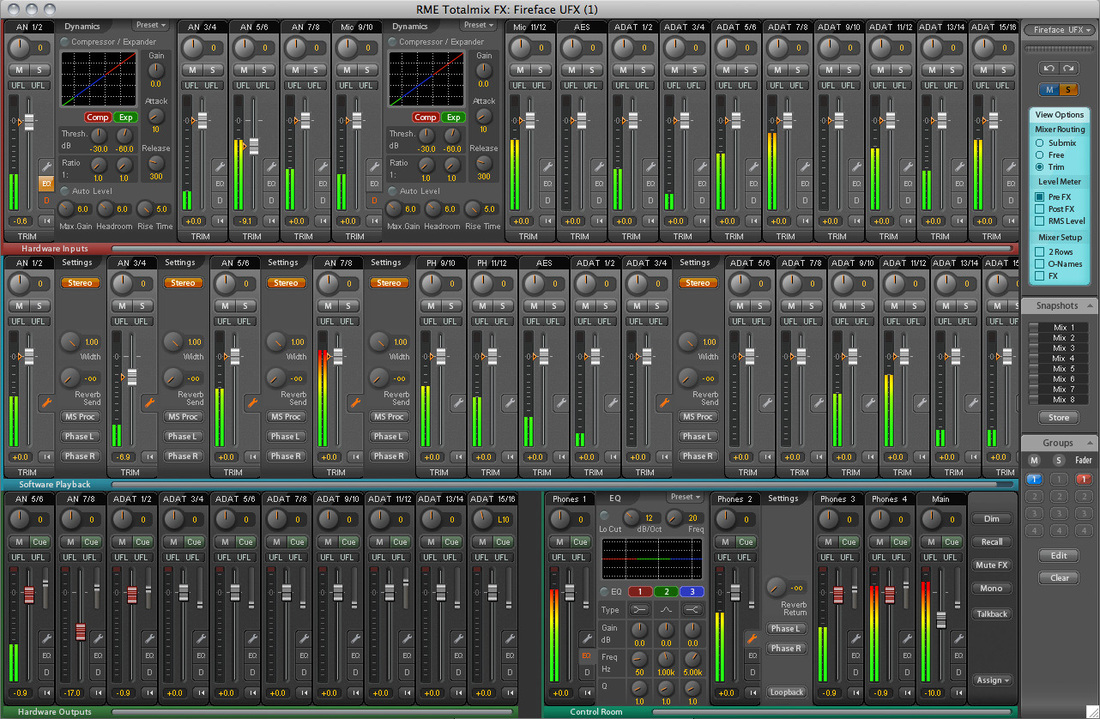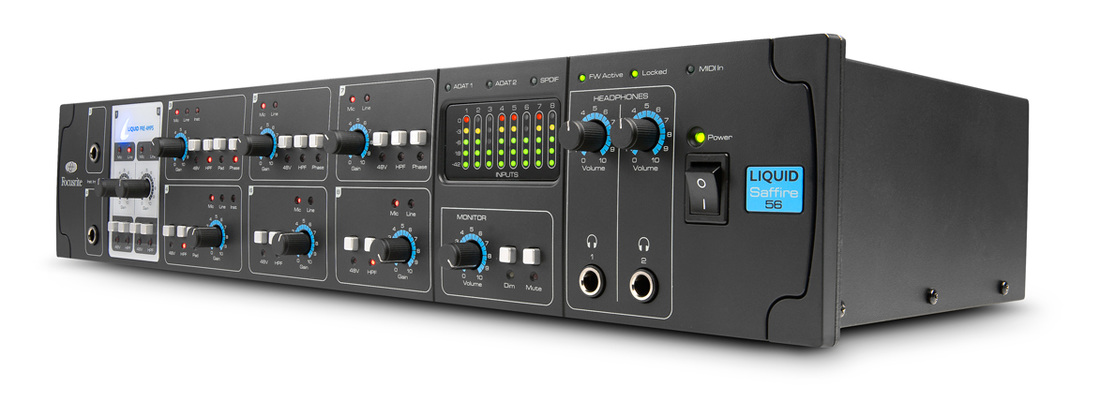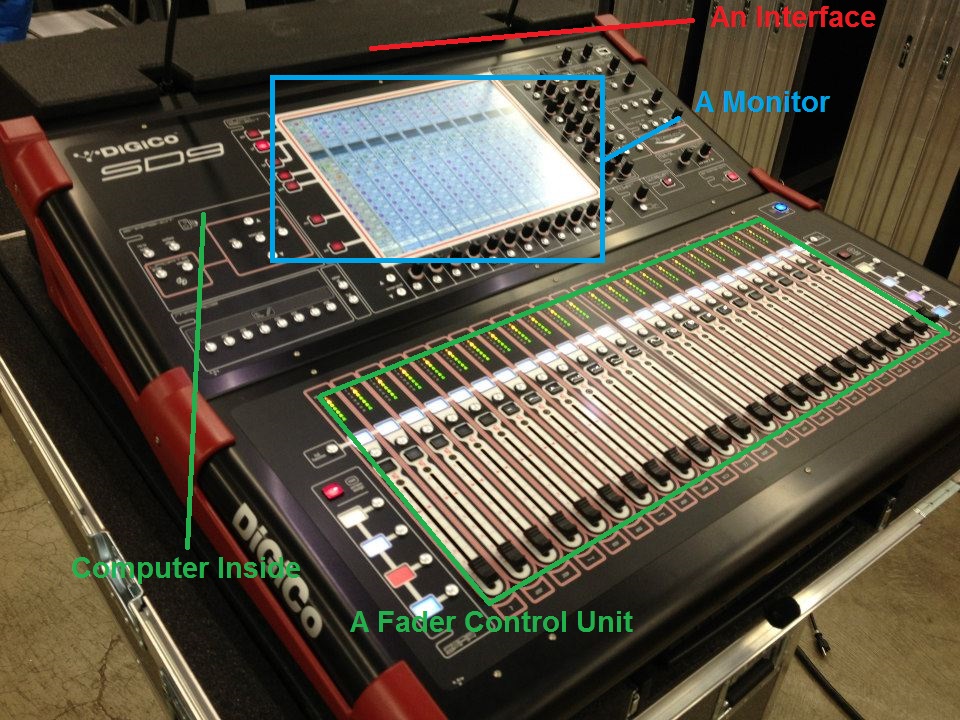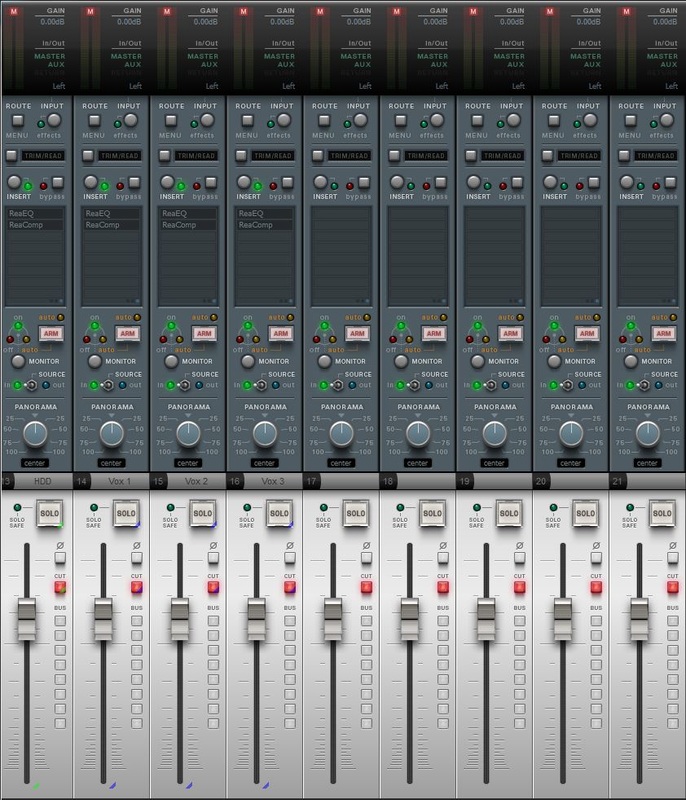HERE COMES THE NAYSAYERS - "BLAH, BLAH, LATENCY, BLAH" So what about latency? Let's talk about this. In a nutshell, latency is the delay you get when you play an instrument, it hits the A/D converter, then goes into the DAW and is processed, and then goes back out of the interface via the D/A converter. Kind of like if you've ever been on a phone call, and for whatever reason, you hear your voice come back loud and clear a second later. Talk about throw you off! "Let me call you back." This used to be an issue just a few short years ago, but technology has progressed to the point where latency doesn't have to be an issue anymore in recording or live mixing. Earlier today I was speaking with a representative from MOTU. We were both speaking about interfaces and such, and the topic of live mixing with a DAW came up. He said "we believe this will be the future of live mixing, and our MOTU AVB interfaces reflect this philosophy." I of course, couldn't agree more. So how does this all relate to latency and building your own modular live digital mixing console? With on-board DSP, any of these interfaces have what is called in the industry, "zero latency monitoring." This is because as soon as the signals from the assorted instruments come into the interface, they are routed right back out of the interface without being processed by the computer. Routing, levels, and even effects can be applied all within the interface using no RAM from the actual host computer. Focusrite interfaces can do this in 1ms or less (which is imperceptible to the human ear). The MOTU AVB series reportedly does it in about .66ms. That's extremely fast. No more will you have latency issues in monitoring anymore. Once this feature came out in affordable interfaces, it has opened up the door for DIY modular live digital mixing consoles. What's even cooler, is that if your church or facility already has in-ear monitoring, you are actually one step closer to having a killer modular live digital mixing console that is equally powerful (if not MORE so), then most live digital mixing consoles out there for a fraction of the price. Stay tuned for Part 3 as we discuss potential latency issues mixing FOH, using your favorite plugins, building the right computer, etc.
0 Comments
Yes I'm Crazy - But It's Ingenious None the Less You may be saying, "Is this even possible?" Nothing New: For a while now, I have been studying this topic extensively. I have found numerous instances of engineers all over the world building their own consoles for the last several years, but it just hasn't caught on yet. The big reason (I believe) is because there isn't a detailed process on how to make this happen on the internet as of yet. A few days ago, I had the youth pastor from my church contact me about some possible digital mixing consoles for his youth room. He had another brand (cheaper - won't name names) that is proving to be too unreliable and "buggy" for what he needs. He's in a pickle because his needs are above what the budget would allow. There are so many churches in the same predicament, and so I have decided to chronicle our process in building a digital console with the rest of the world: In the next couple of months, we are going to be embarking on a journey of building our very own digital console at a fraction of the price of something that is as equally powerful. Follow along with us as we discuss everything you will need in materials, and how to tweak your new console for solid performance. After we successfully build this console, we will be turning to our main sanctuary for an even more quality system. Once you see what and how we pull this off, you may find that this option would be the most eloquent and powerful digital mixing console you can buy for the amount of money spent. Fully Expandable, Fully Customizable, Powerful, Easily & Cheaply Repairable, Reliable. I believe this will be the future of live digital mixing consoles - it just has to catch on; which it eventually will! Materials Needed NOTE: Don't spend money on gear that you either don't need, or won't prove to be effective. There are some particulars you will need to know along the way that will be critical in understanding how all of this works, and if you go out and purchase the wrong gear, it will be money wasted. There are literally hundreds of details and particulars all interconnected in this project. It's not a hard process, but it's a detailed process. In the next couple of weeks - we will be purchasing the gear we need to make this happen - I will not be giving any hard details as of yet (that's going to be in parts 2 and 3): A Computer - Every digital mixing console has a computer in it, and this one will be no different. Generous amount of RAM in a machine with a fast CPU. The program drive will be Solid State, and the data drives will be separate and redundant. Once everything is tweaked and working perfectly with our DAW and OS, we will image the original drive and have a second tested drive ready to go in a safe and dry box just in case we should have something go south. Redundancy is the key here. Then having your drives in hot-swappable bays is ideal. If you have a drive fail, or there's some type of corruption, you can have your machine back up and going within seconds. Dual Monitors - You need to be able to see everything you are doing, and yet again, every major digital mixing console has screens on them as well. Regular 24" monitors for the youth room will work fine, while I will be pushing for us to get touch sensitive monitors in the main sanctuary; yes they are more expensive, but this will provide built-in redundancy in case a fader control unit goes south in the middle of a service/set. D.A.W. - Yes that's right, a Digital Audio Workstation typically used for recording. Right now we are in talks about which D.A.W. is the most stable and user friendly for our use. I have used all of them before with the exception of a couple of the newer and/or esoteric ones out there (which for our uses would be a no-go anyway). The D.A.W. we choose will have a proven track record of reliability, solid performance, tons of support and support material from end users, inexpensive, connect to most fader control units, low latency, the ability to set up monitor routing solidly, and a very user friendly GUI and workflow. I am leaning towards Reaper on this one for all of the above reasons, but we may settle on something else after a ton of testing. I also love the ease of tweaking it for live use. The ability to disable the Solo button in the GUI (not a good option during a live set) with ease, and its routing simplicity is a huge plus as well. By the way: Yes I have heard of SAC. I have a suspicion that he just tweaked his code regarding routing with his previous product called SAW - which is another digital audio workstation. I hear it's a solid performer reliability wise, but we have no interest in it for various reasons. It may be a fit for your congregation, but it's not what we are looking for currently. Props to him though for being one of the first DAW coders to push for live use. IF OTHERS WOULD DO THE SAME, IT WOULD BE TRANSFORMATIVE IN OUR INDUSTRY. Interfaces - You are going to need something for A/D to D/A conversions for use in the real world. I am currently looking at the following options: Focusrite, MOTU, Apogee, or RME. For the youth room, I am leaning towards the Focusrite Saffire series with some added Focusrite OctoPres because of the reliability, ease of use, internal routing capabilities, and sound quality for an affordable price. We are not 100% settled on this yet, but we will get there after some very thorough investigation (i.e. - I own some Focusrite interfaces we are going to be putting to the test). Also - I am most concerned with Latency (as I should be) regarding the youth room project because they are running mostly stage wedges - so it is important that the interface we choose has "zero latency" (technically speaking this isn't possible, but you know what I mean). Our goal is to keep latency below or around 10ms if possible. In this area, it is not perceptible to most listeners. Now interfaces come in 2 flavors (actually more than this, but for our uses will only be discussing two): with microphone preamps built in as an all-in-one unit, and those that are just the raw converters where you have the choice which mic pres you will use. The second option is more expensive, but the quality you can obtain is better. I am at this point thinking of the old K.I.S.S. factor, but this will be discussed in the future as a possible option. Now in regards to the 2nd project: the main auditorium has an Aviom In-Ear monitoring system with a splitter in the input module, and so while latency is still a concern regarding using plugins, and etc, it's not as big of an issue regarding monitoring. We will only have plugins loaded on our consoles that will support very low latency, and will be rigorous in our testing. Plugins - We are going to be choosy here. Obviously this is where this project will shine. The ability to use very high quality plugins without being locked into what an affordable digital console can offer, is a big plus here. Think of the possibilities. Again, latency is obviously a concern, and so we will be testing any plugin we use before it is approved for live use. This is another factor to consider when choosing a DAW because there are some really great & free VST products available that will give our system greater flexibility for little to no money. Voxengo Span comes to mind here; as well as a few others. Again, everything will be fully tested to make sure we have no bugs during a live set. Control Surface(s) - Mixing a live set with a mouse and keyboard is obviously a total no go. Because of this, we will be using a control surface with a proven track record of reliability. We also want to make sure it will work with the OS and DAW we choose. More than likely, we will go with one control surface for our youth room that has the ability to switch banks. In our main sanctuary, I will be pushing to have at least 32 channels of physical faders for ease of use in our services. UPS - This means Uninterruptable Power Supply. This is critical because when your digital mixing console is computer based (as they all are), you don't need a power "blip" to shut everything down while you are waiting for the machine to reboot. Many times, when a machine loses its power in the middle of something, it can corrupt the OS (operating system), and you could also lose all of your settings and mix. This is not an option, and a $40 UPS is more than worth the money to keep the event going with minimal damage in case of a power event. At that point, you are just waiting on the amplifiers and backline to power back on (which can happen in seconds). Remote Mixing - In our youth room, I would like for the performers to have the ability to mix their monitors remotely, and the youth pastor to be able to remotely mix the house as well. This will probably be handled by Teamviewer or some other VNC type product. Support for android and apple products is a plus. That way, every user will have their own monitor controller with them at all times. It's called a cell phone (or iPad). That's it for now! Stay tuned for Part 2! |
Do you like vintage recording gear and articles? You should visit our sister site: The Vintage Audio Portal!
**Advertise With Us! We have thousands of visitors a day. Contact us here to learn more.
Archives
August 2021
Categories |


